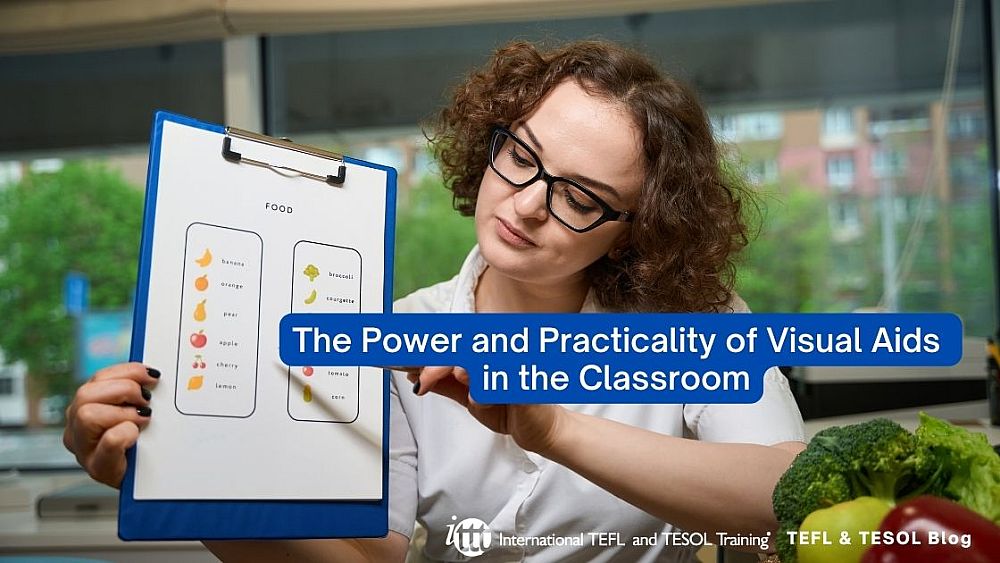The Power and Practicality of Visual Aids in the Classroom

Examples of visual aids include real objects (referred to as realia), pictures, photographs, menus, timetables, and models. They may be authentic materials not designed for teaching (authentic material) or created specifically for the classroom (non-authentic material).
Table of Contents
They can be used to elicit language.
Visual aids can stimulate discussion.
They can act as an aid to memory.
The use of visual aids can reduce Teacher Talk Time (TTT).
Are you ready to teach English abroad or online?
Check out what our course grads say in our many video testimonials!
Why are visual aids useful?
They can be used to elicit language.
For example, the use of a photograph allows students to understand and discuss various scenarios related to the image. It is crucial to ensure that the photograph is sufficiently large for everyone to see, avoiding information overload that may hinder comprehension. Uncluttered pictures, diagrams, and charts are key.
Visual aids can stimulate discussion.
Having real objects or photos can initiate discussions by connecting to the object, making them particularly useful when introducing a new topic. Visual aids provide background information and facilitate language elicitation.
They can act as an aid to memory.
Studies indicate that additional visual information enhances memory retention. The brain can retain more information when accompanied by a visual representation, making visual aids valuable for memorization. This principle is behind the popularity of flashcards, emphasizing the importance of incorporating visual aids regularly.
The use of visual aids can reduce Teacher Talk Time (TTT).
Showing a real object is simpler than describing it, leading to more efficient teaching. For instance, when eliciting words like "pen," presenting the actual object allows students to easily identify and name it. Similarly, using real fruits and vegetables, or models, when eliciting their names is more visually stimulating than attempting to describe them.
Are you ready to teach English abroad or online?
In conclusion, while some visual aids can be purchased or cut out from various sources, many ideas for visual aids can be created by teachers themselves. If a specific aid is not readily available, consider making it or creating a model to enhance the effectiveness of visual materials in the ESL classroom.
Apply now & get certified to teach english abroad!
Speak with an ITTT advisor today to put together your personal plan for teaching English abroad!
Send us an email or call us toll-free at 1-800-490-0531 to speak with an ITTT advisor today.
Related Articles:
- Top 10 Cities in Europe with the Highest Demand for English Language Teachers
- 5 Reasons To Take A TEFL Course Right Now - Even If You Are Not Leaving Yet | ITTT | TEFL Blog
- All the Documents You Will Need to Teach English Abroad
- The Impact of Positive Motivation on an ESL Classroom
- You're Never Too Old to Change Your Life and Do a TEFL Course | ITTT | TEFL Blog
- Getting Student Placement Right - The Best Desk Arrangements for EFL Students



